So the answer to last week’s puzzler is Old Man’s Beard Lichen, but like many things in nature, this is the common name and there are many other common names, including Seaweed of the Mountains, Fish Bone Beard, Methuselah’s beard, Woman’s Long Hair, and my favorite, Tree Dandruff. This last one is especially great because, like in the case of the forest where I live, I am always finding it on the ground beneath the trees. A five minute walk will yield a handful of these lichens, some of which are loose on the forest floor, others that are attached to fallen branches. The genus is Usnea, pronounced ooze knee a. If you want to be more general, it is safe to say that the picture is of a kind of Lichen, so everyone who guessed the puzzler was correct.
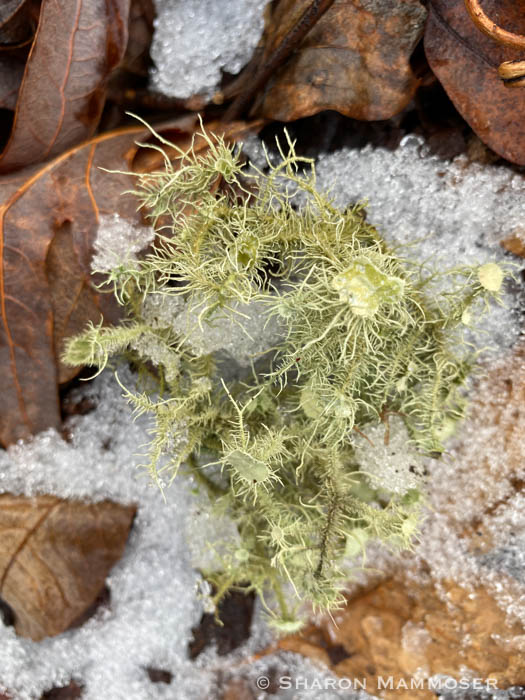
Did you know there are more than 3,600 kinds of lichen just in North America alone? If you look at the rest of the world, there are more than 20,000 different kinds of lichen. Safe to say it would be challenging to know the names of all of them! If have been following along with my blog posts for any length of time, you may recall I featured lichens in my Weekly Puzzler #23, though way back then I knew a lot less about things and didn’t actually identify the specific type of lichen.
Lichens are a complex life form that consists of two different things– a fungus and an algae or cyanobacteria. They are not plants, nor are they related to plants as they do not have roots that absorb water. The fungus provides the structure and prevents the lichen from drying out and the algae or cyanobacteria makes the food. This is a mutualistic relationship, where both partners benefit. Because lichens are sensitive to air pollution, when you see them growing on trees, rocks or other structures, you can be sure you are breathing clean air.
Lichens do not take anything from the hosts they live on, so contrary to what many believe, lichen on a tree are not causing the tree to die. They may grow on dying trees, but they are not in any way causing the tree to die.
There are three main kinds of lichen:
- Crustose, which as their name suggests are crust-like in appearance and are attached strongly to rocks, tree trunks, branches, etc. Some of these feature beautiful colors and you will often see them growing on rocks along trails, especially in open areas at the tops of mountains. Here are some I’ve seen and photographed through the years.
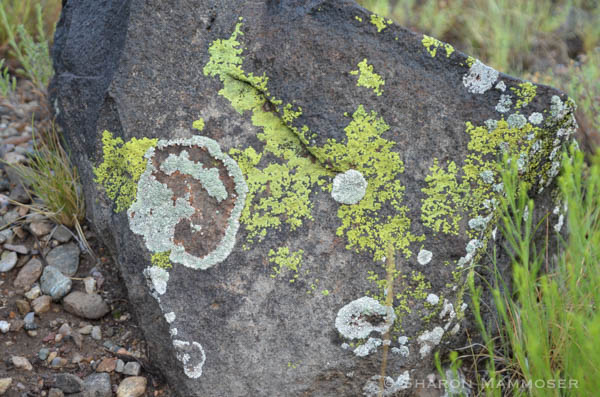
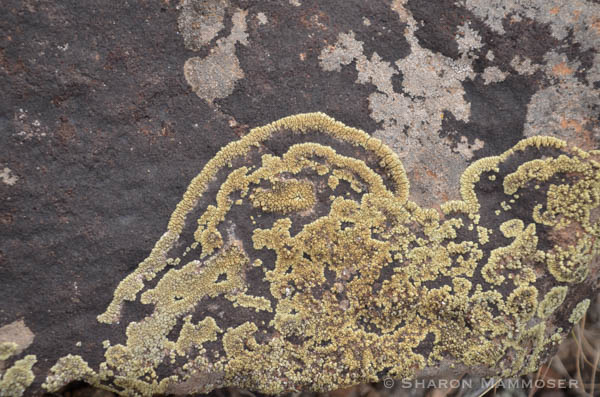
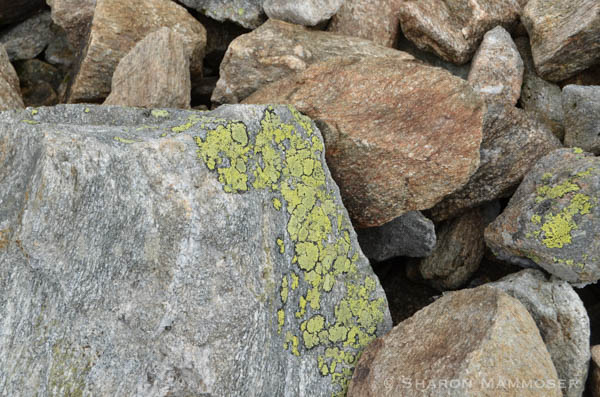
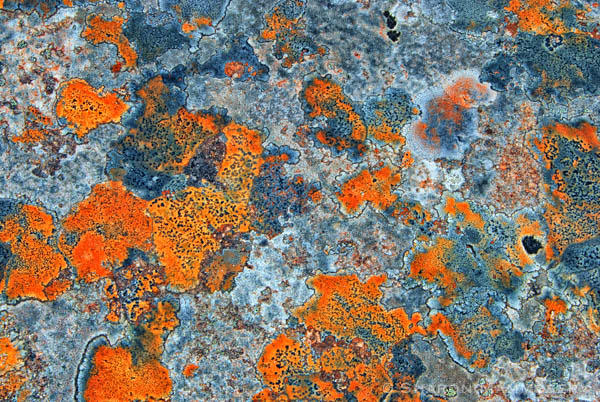
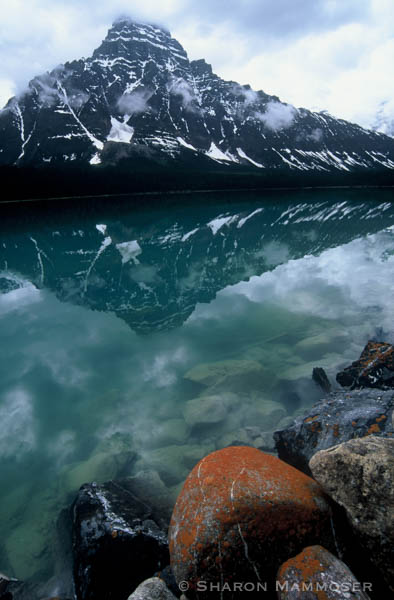
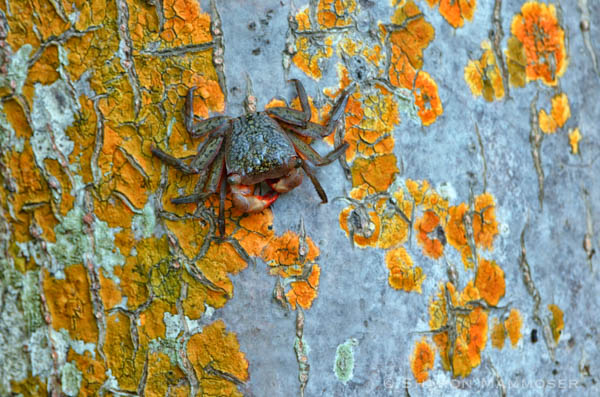
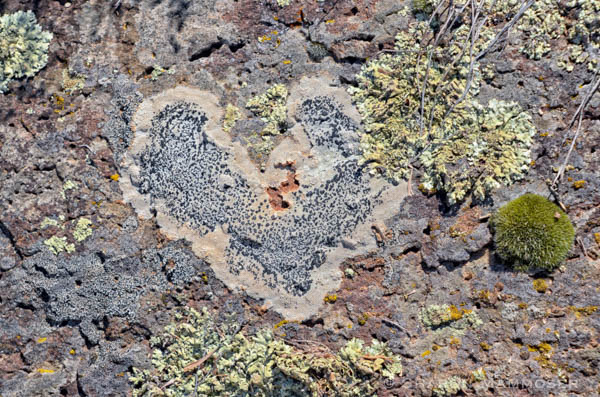
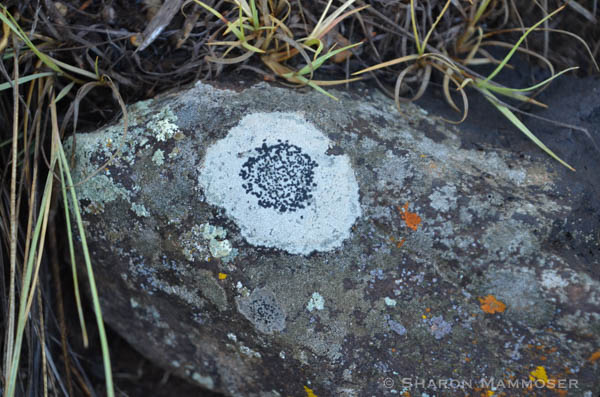
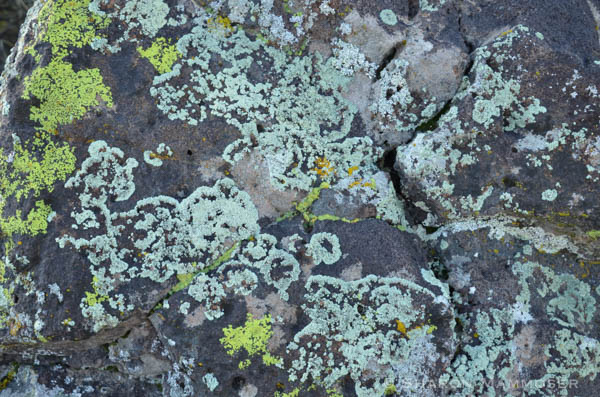
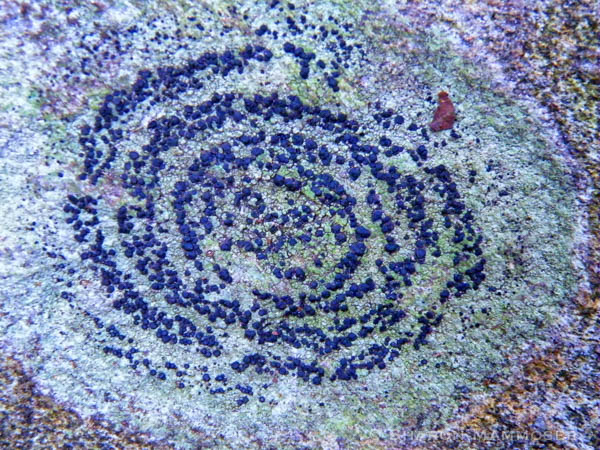

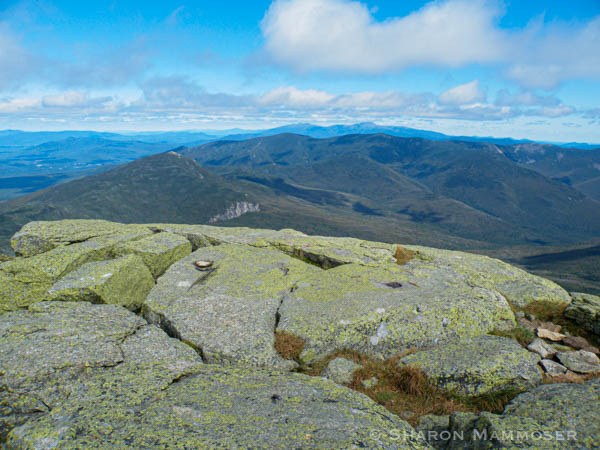
2.Foliose, these are flattish and leaf-like in appearance. My puzzler number #23 was an example of this kind.
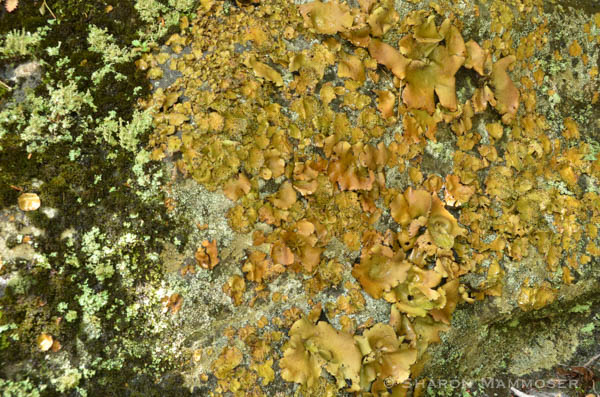

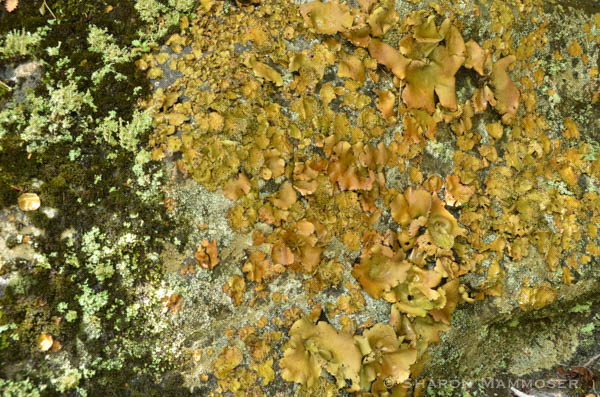
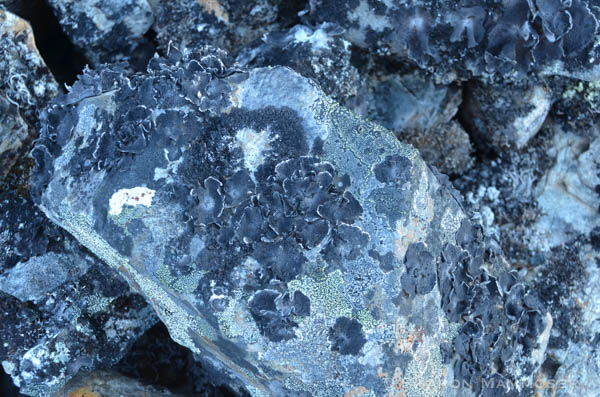
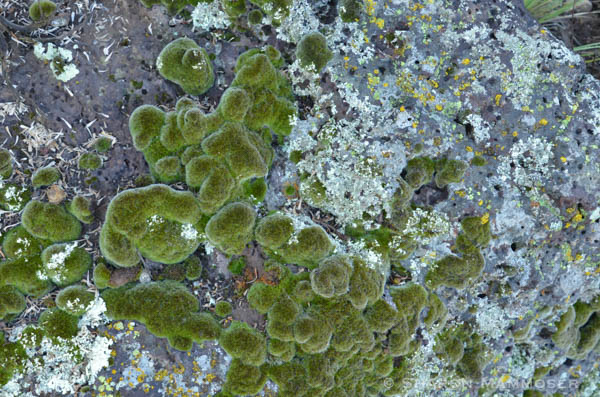
3.Fruticose, these, like the puzzler from last week, are hair-like in appearance.
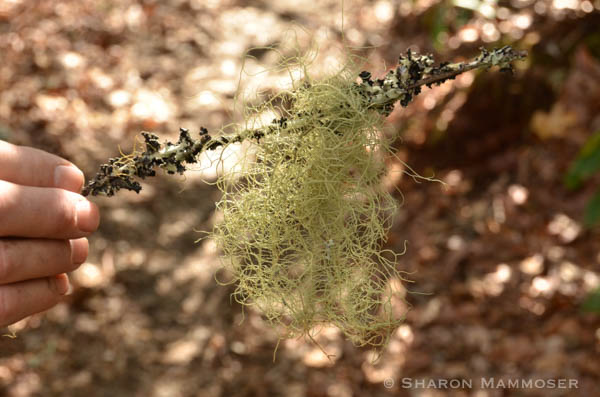
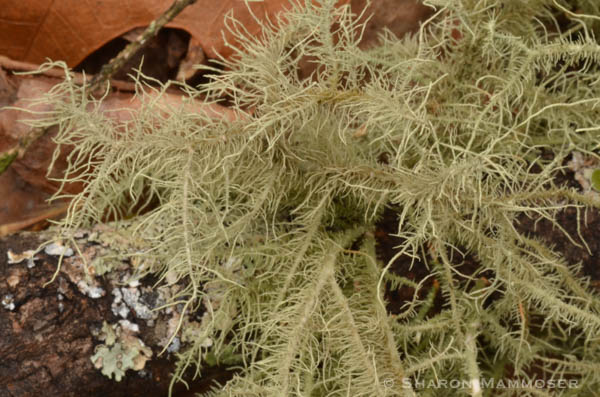
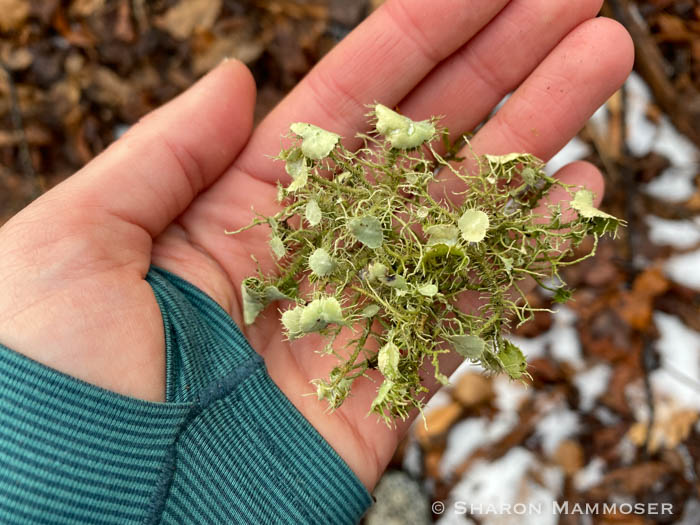
So are you wondering what’s the purpose of those saucer-like parts on them? When I saw them I wondered that too. They are reproductive structures known as apothecia. This explains why some old man’s beard lichen have them and some don’t–they are not always present. Lichen are able to reproduce sexually or asexually.
A lot of animals eat or use lichen, including deer, elk, moose, caribou (makes up 90% of its diet in winter!), mountain goats, bighorn sheep, antelope, chipmunks, flying squirrels, voles, pika, squirrels, snails, slugs, mites, small insects and others. In addition, many animals use it in other ways including birds like hummingbirds using it for their nests and insects using it for cover. In nature it is essential to many species!
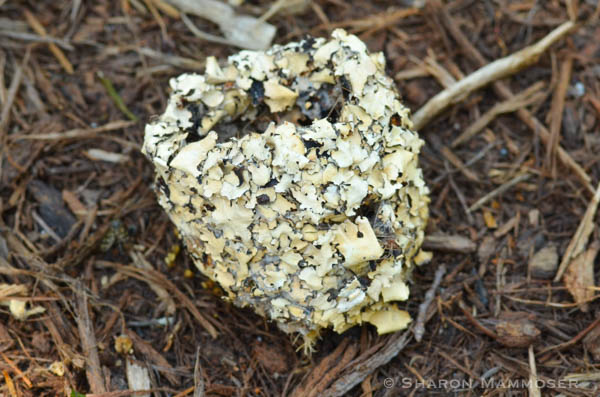
One more cool thing about lichens is that they may be hundreds of years old. They may grow less than a millimeter per year. According to Wikipedia “An Arctic species called “map lichen” (Rhizocarpon geographicum) has been dated at 8,600 years, apparently the world’s oldest living organism.[57]
Okay, then, enough about lichens, let’s get on with the next puzzler. It’s another thing that you might see growing in trees. Check it out here, and have a great weekend! Thanks for tuning in.

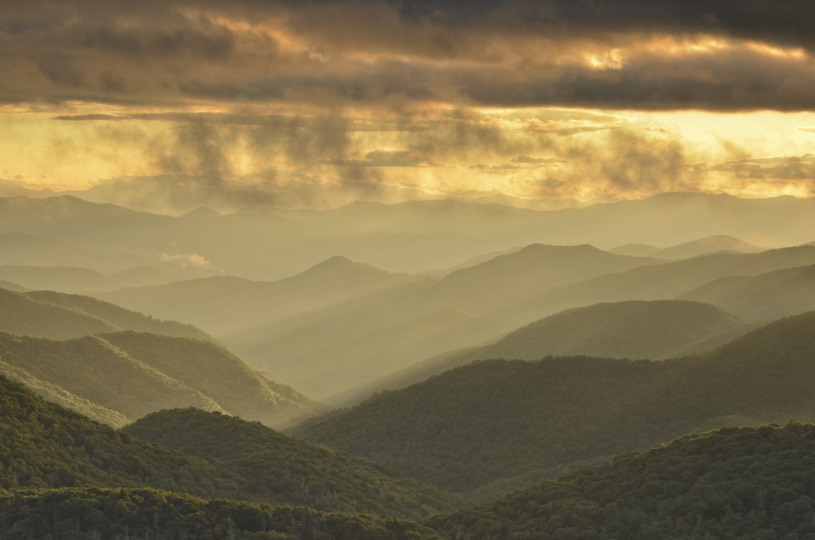
Awesome! I love learning new things about nature from you Sharon! I always wondered what these were.
Jill, I hope you are well. Thanks for taking the time to write. One of the many reasons why I love writing this blog so much is that it gives me a good reason to learn new things about nature. I am learning right along with you all!